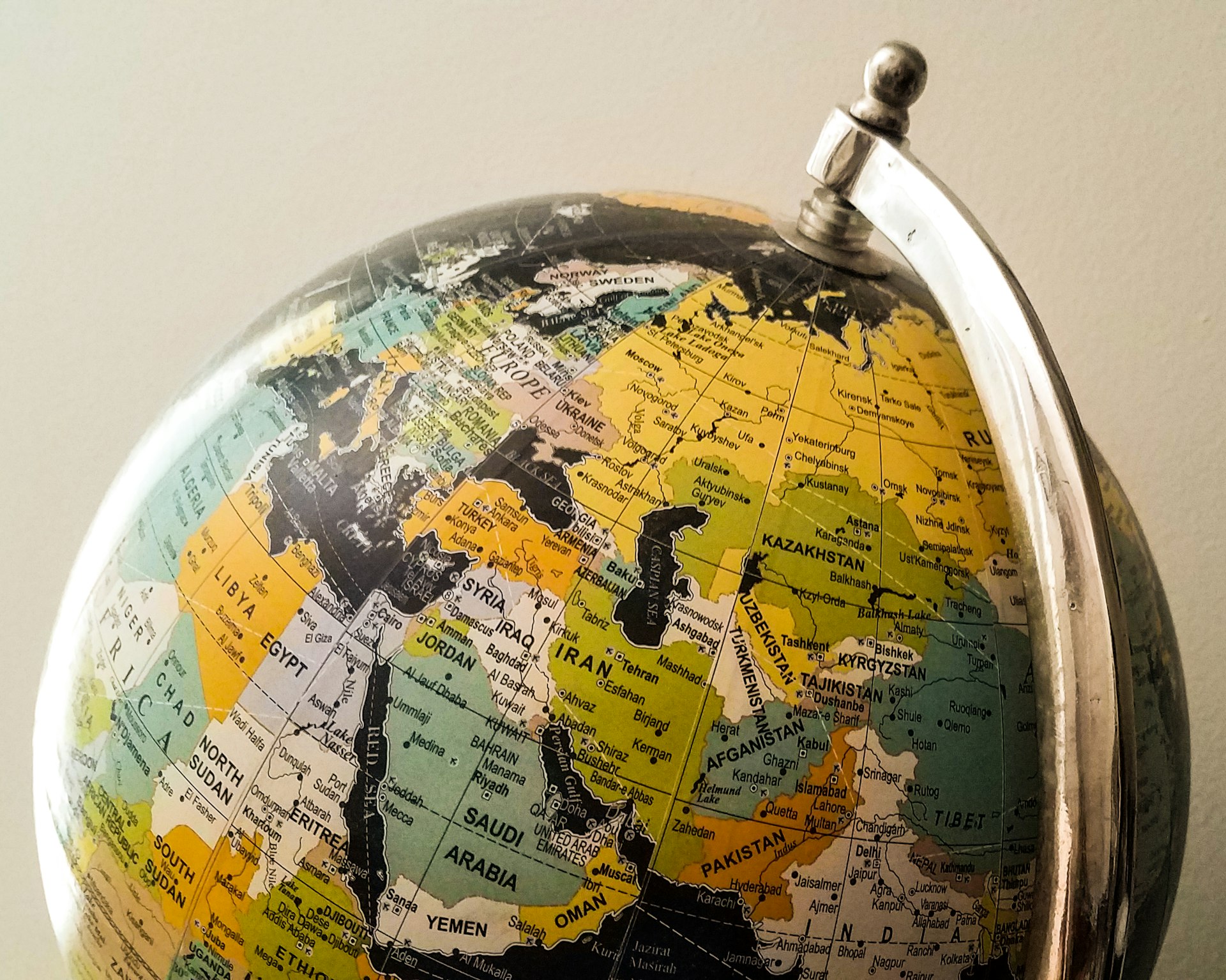Driving Business Value Through Ethical Sourcing: A Global Approach

Photo by Random Person on Unsplash
Introduction
In today’s interconnected marketplace, businesses are under increasing scrutiny to ensure their products and services are sourced ethically. Ethical sourcing goes beyond compliance, focusing on the welfare of workers, environmental sustainability, and transparency at every stage of the supply chain. As consumer awareness grows and regulations tighten, companies that embed ethical sourcing into their procurement strategies can unlock competitive advantages, foster long-term trust, and mitigate operational risks [1] .
What Is Ethical Sourcing?
Ethical sourcing is the practice of procuring goods and services in a manner that prioritizes social responsibility, fair labor practices, and environmental stewardship. This means every link in the supply chain-from raw materials to finished products-must adhere to standards that protect workers’ rights, ensure safety, and minimize negative impacts on the environment [2] . Unlike generic procurement, ethical sourcing requires diligence in supplier selection, ongoing monitoring, and a commitment to transparency.
Core Principles of Ethical Sourcing
- Labor Rights: Enforcing fair wages, safe working conditions, and prohibiting child or forced labor [3] .
- Environmental Responsibility: Reducing carbon emissions, using sustainable materials, and protecting biodiversity.
- Transparency: Maintaining traceable records and open communication throughout the supply chain.
- Compliance: Adhering to international laws and industry standards, such as the EU Corporate Sustainability Due Diligence Directive (CSDDD) and the U.S. Uyghur Forced Labor Prevention Act [3] .
Why Ethical Sourcing Matters for Global Businesses
Ethical sourcing is not just a moral imperative; it is a strategic business decision. Companies that commit to responsible sourcing benefit from enhanced brand reputation, reduced supply chain risks, and improved stakeholder relationships. Ethical lapses, on the other hand, can result in regulatory penalties, consumer backlash, and disrupted operations.
For example, the apparel industry has faced repeated challenges with labor abuses in overseas factories. Brands that proactively audit their supply chains and work with certified suppliers are better positioned to avoid scandals and maintain customer loyalty [4] . Similarly, tech companies are under pressure to source conflict-free minerals, requiring new levels of supplier engagement and due diligence.
Implementing Ethical Sourcing: Step-by-Step Guidance
-
Develop a Clear Ethical Sourcing Policy:
Begin by defining your company’s ethical standards. This policy should cover worker rights, environmental impact, and compliance requirements. Ensure the policy is communicated to all suppliers and integrated into procurement contracts.
Example:
Many global brands publish their ethical sourcing policies and update them regularly to reflect new regulations and best practices. -
Map and Assess Your Supply Chain:
Identify every supplier and sub-supplier involved in your product lifecycle. Use audits, self-assessment questionnaires, and third-party certifications to evaluate each supplier’s adherence to your standards. Because visibility decreases deeper into the supply chain, prioritize critical or high-risk areas for more frequent assessments [1] .
Challenges:
Lack of transparency or complex networks can hinder assessments. Consider technology solutions, such as blockchain, to increase traceability. -
Engage and Train Suppliers:
Collaborate with suppliers to build capacity and encourage compliance. Offer training on labor laws, environmental management, and reporting practices. Establish clear expectations and provide feedback on performance.
Alternative Approach:
Partner with industry groups or NGOs to deliver supplier training and support. -
Monitor and Audit Performance:
Establish a regular schedule for audits and self-assessments. Use both announced and unannounced audits to get a realistic view of supplier operations. Where possible, leverage third-party verification for objectivity.
Example:
Companies like Unilever and Nestlé conduct regular supplier audits and publish progress reports as part of their sustainability commitments. -
Remediate and Improve:
If issues are identified, work with suppliers to develop corrective action plans. Set clear timelines and follow up to ensure improvements are made. If suppliers consistently fail to meet standards, consider alternative sourcing options.
Key Takeaway:
Remediation and continuous improvement are central to lasting change; punitive approaches alone rarely deliver sustainable results.
Regulatory Frameworks and Global Standards
Modern global businesses must navigate a complex regulatory landscape. Laws such as the EU’s Corporate Sustainability Due Diligence Directive (CSDDD) and the U.S. Uyghur Forced Labor Prevention Act impose direct obligations on companies to monitor and remediate human rights violations and environmental harms in their supply chains [3] . Non-compliance can have severe financial and reputational impacts.
To stay compliant, companies should regularly review evolving regulations and seek certifications from recognized organizations, such as Fair Trade or the Rainforest Alliance. While not always mandatory, these certifications provide assurance to consumers and business partners of a company’s ethical sourcing commitments.
Practical Steps for Accessing Ethical Sourcing Services
If your business wants to transition to ethical sourcing, several actionable pathways are available:
- Identify Industry Resources: Organizations like Sedex and the Ethical Trading Initiative provide platforms for supplier audits, resources, and training. You can visit their official websites to learn about membership and available tools [1] .
- Join Certification Programs: Many industries have voluntary certification schemes that help businesses demonstrate compliance with ethical sourcing standards. Common examples include Fair Trade and Rainforest Alliance. Search for “[product] ethical certification” to find programs relevant to your sector.
- Consult Supply Chain Experts: Consider working with procurement consultancies specializing in ethical and sustainable sourcing. They can guide you through supplier mapping, risk assessment, and policy development.
- Leverage Technology: Digital platforms and supply chain management tools can streamline data collection, monitoring, and reporting. Look for solutions that support traceability and transparency.
For businesses seeking additional support, you can:
- Contact your industry association for guidance on best practices.
- Engage with local chambers of commerce or trade groups to find vetted suppliers.
- Search for government initiatives that support responsible business practices. For example, the U.S. Department of Labor publishes resources on supply chain standards and labor rights.
Challenges and Solutions in Ethical Sourcing
While the benefits of ethical sourcing are clear, implementation presents several challenges. These include limited visibility into complex global supply chains, varying standards across regions, and the potential for increased costs. Overcoming these obstacles requires a phased approach, leveraging technology, building supplier partnerships, and regularly updating policies to reflect new risks and regulations [5] .
Some businesses may face resistance from suppliers or internal stakeholders. In such cases, demonstrating the long-term value-such as risk reduction, access to new markets, and enhanced brand value-can help build support for ethical sourcing initiatives.
Key Takeaways
Ethical sourcing is an ongoing commitment that requires diligence, transparency, and adaptability. By embedding these principles into core business strategy, companies can build resilient, future-proof supply chains and gain the trust of customers, investors, and regulators. To get started, clearly articulate your ethical sourcing policy, engage your suppliers, leverage external resources, and stay informed on regulatory changes. For further support, consult recognized industry organizations or supply chain experts who can tailor solutions to your business needs.

Photo by Louis Hansel on Unsplash
References
- [1] Sedex (2024). What does “Ethically Sourced” Mean?.
- [2] ProQ Smart (2024). What is Ethical Sourcing? How it Impacts on Procurement?
- [3] TradeVerifyd (2024). The New Standard for Ethical and Compliant Global Sourcing.
- [4] IBM (2024). What Is Ethical Sourcing?
- [5] Procurement Tactics (2024). Ethical Sourcing – Definition & Examples.
MORE FROM resultsfordeals.com













